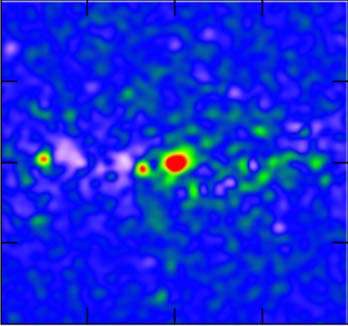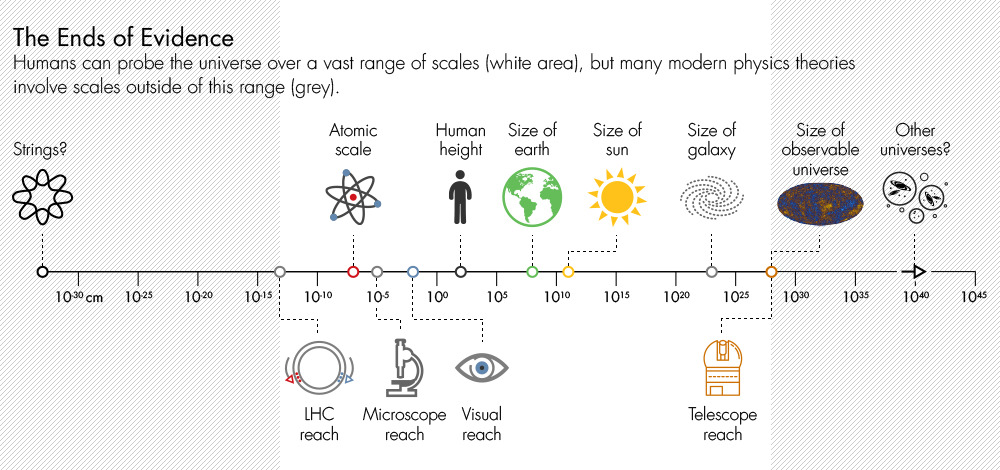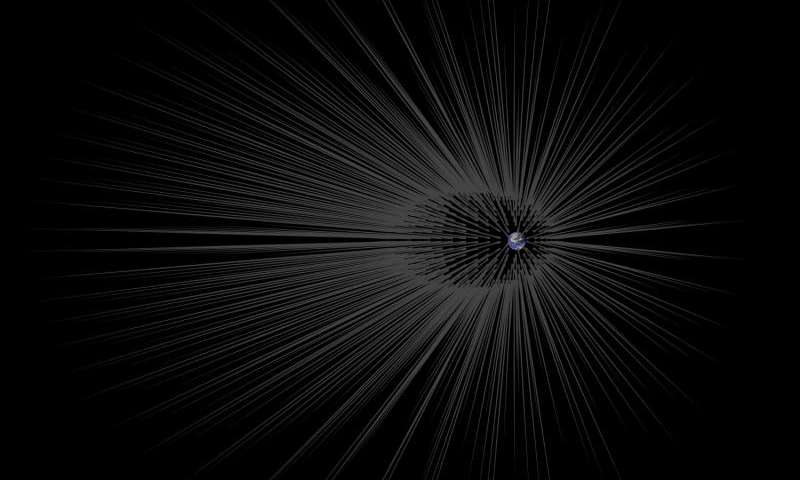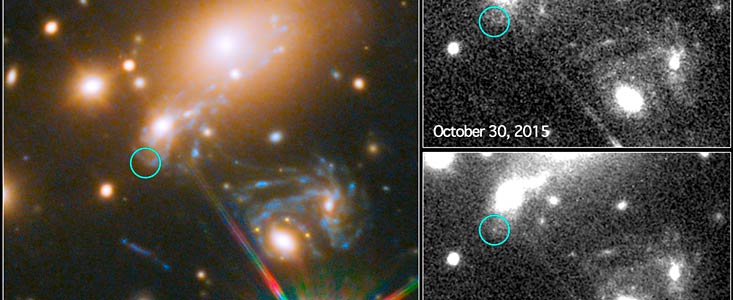Category Archives: Science
Possible signature of dark matter annihilation detected

A false-color image of the anomalous gamma-ray emission from the central region of the Milky Way galaxy; this emission is suspected of coming from dark matter annihilation. In this image, the emission from conventional sources has been subtracted from the total. The region covers roughly five degrees; the brightest emission is colored red and faintest blue. Credit: Daylan et al.
CfA astronomer Doug Finkbeiner and a team of colleagues claim to have identified just such a signature of dark matter annihilation.
Read more at: http://phys.org/news/2016-03-signature-dark-annihilation.html#jCp
Physicists investigate the structure of time…
Although in theory it may seem possible to divide time up into infinitely tiny intervals, the smallest physically meaningful interval of time is widely considered to be the Planck time, which is approximately 10-43 seconds. This ultimate limit means that it is not possible for two events to be separated by a time smaller than this.
Physicists investigate the structure of time, with implications for quantum mechanics and philosophy
Taming Superconductors With String Theory | Quanta Magazine
The physicist Subir Sachdev borrows tools from string theory to understand the puzzling behavior of high-temperature superconductors.
Time Entanglement Raises Quantum Mysteries | Quanta Magazine
Quantum Weirdness Now a Matter of Time Bizarre quantum bonds connect distinct moments in time, suggesting that quantum links — not space-time — constitute the fundamental structure of the universe.
Source: Time Entanglement Raises Quantum Mysteries | Quanta Magazine
Physicists and Philosophers Debate the Boundaries of Science | Quanta Magazine
 If a theory can’t be tested, is it still science?
If a theory can’t be tested, is it still science?
Physicists and Philosophers Debate the Boundaries of Science | Quanta Magazine
Caught in the act | ESA/Hubble
The NASA/ESA Hubble Space Telescope has captured the image of the first-ever predicted supernova explosion. The reappearance of the Refsdal supernova was calculated from different models of the galaxy cluster whose immense gravity is warping the supernova’s light.
Caught in the act | ESA/Hubble
Earth might have hairy dark matter

This illustration shows Earth surrounded by theoretical filaments of dark matter called “hairs.” Credit: NASA/JPL-Caltech
The solar system might be a lot hairier than we thought. A new study publishing this week in the Astrophysical Journal by Gary Prézeau of NASA’s Jet Propulsion Laboratory, Pasadena, California, proposes the existence of long filaments of dark matter, or “hairs.”
Kaon decay – asymmetry between matter & antimatter
Dr Nicolas Garron, a Research Fellow in the Centre of Mathematical Sciences, has helped to devise the first theoretical calculation of how the behavior of kaons differs when matter – anything with mass, such as the world around us – is swapped out for antimatter – made out of similar particles with opposite charge.
Ground-breaking research could challenge underlying principles of physics























